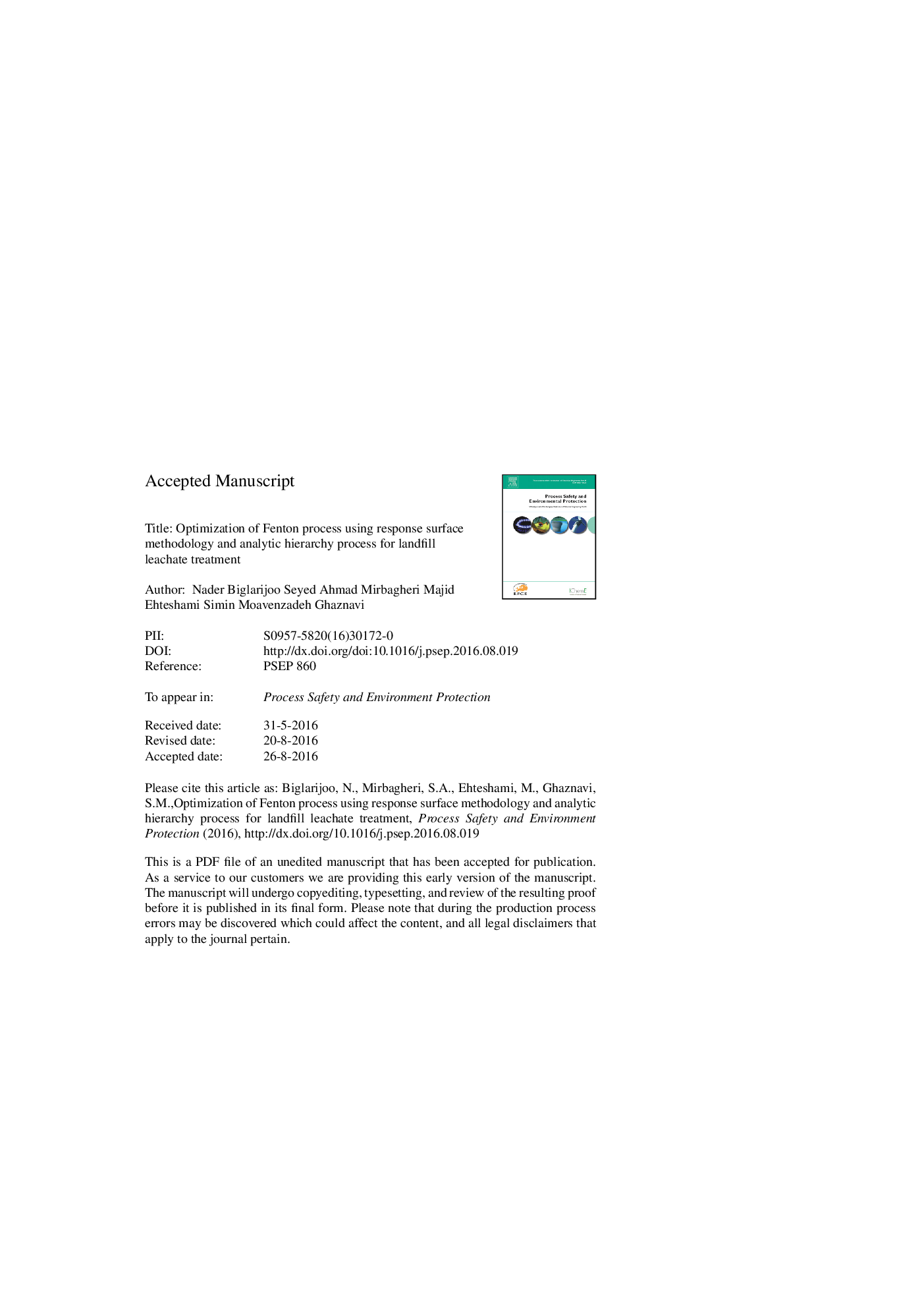| Article ID | Journal | Published Year | Pages | File Type |
|---|---|---|---|---|
| 4980933 | Process Safety and Environmental Protection | 2016 | 27 Pages |
Abstract
Typically, to treat landfill leachate, biological techniques alone are not sufficient. In this study, Fenton process was found to be effective as a pretreatment method. Analytic hierarchy process (AHP) was used to select the favorable catalyst between FeSO4 and FeCl2 when three criteria, namely, (i) COD removal, (ii) sludge to iron ratio, and (iii) risk were considered. Meanwhile, response surface methodology was applied to model and optimize three target responses, (i) COD removal, (ii) sludge to iron ratio, and (iii) organic removal to sludge ratio. The effective variables included pH, [H2O2]/[Fe2+], Fe2+ dosage and reaction time. In addition, to minimize the danger, generated sludge was reused in the Fenton process. According to AHP sensitivity analysis results, priority percentage for FeCl2 and FeSO4 were 64% and 36%, respectively. Additionally, according to the statistical analysis, all suggested models were adequate (with R2 of 0.9171-0.9617). The optimum condition was found to be pH = 6, [H2O2]/[Fe2+] = 20 mole ratio, [Fe2+] = 170 mM, and reaction time = 105 min. Results showed that [H2O2]/[Fe2+] and [Fe2+] are significant for COD removal while pH and [H2O2]/[Fe2+] were important factors for sludge to iron ratio (SIR) and organic removal to sludge ratio (ORSR), respectively. Meanwhile, when iron sludge was reused as catalyst, the results were acceptable even after five times regeneration.
Related Topics
Physical Sciences and Engineering
Chemical Engineering
Chemical Health and Safety
Authors
Nader Biglarijoo, Seyed Ahmad Mirbagheri, Majid Ehteshami, Simin Moavenzadeh Ghaznavi,
